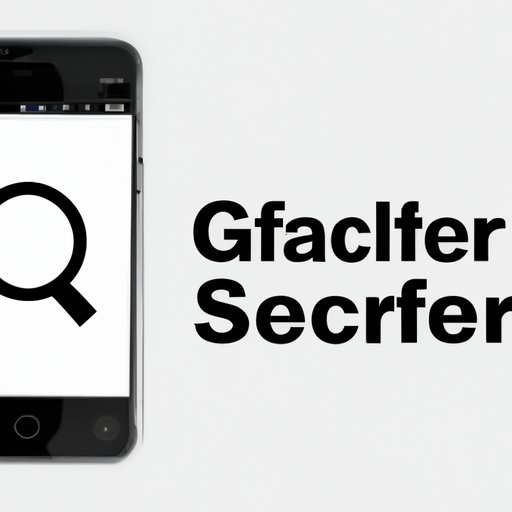
Introduction
Have you ever spent hours searching for the perfect image for a project, only to come up empty-handed? Do you struggle to find high-quality, relevant images for your website or social media posts? If so, you’re not alone. Doing an image search can be a frustrating and time-consuming process, but it doesn’t have to be. In this article, we’ll explore how to do an image search effectively, using a variety of tools and techniques to help you find exactly what you’re looking for.
Step by Step Guide: How to Do an Image Search on Google
Google Image Search is one of the most popular tools for finding images online, and it’s easy to use. Here’s a step-by-step guide to help you get started:
1. Go to Google.com and click on “Images” in the upper-right corner of the screen.
2. Type your search term into the search box and hit “Enter” on your keyboard.
3. Browse through the results to find the image you want. You can hover over an image to see a larger version, and click on it to view it in more detail.
4. To refine your search, click on “Tools” beneath the search bar. Here, you can filter by color, size, type, and more.
5. Once you’ve found the image you want, click on it to view it in full size. You can then download it or save it to your Google Drive.
Mastering the Art of Image Searching: Tips and Tricks for Better Results
While Google Image Search is a great place to start, there are other tools and techniques you can use to improve your results. Here are a few tips and tricks to help you become an expert image searcher:
1. Use advanced search options to improve results. Many search engines, including Google, offer advanced search options that can help you narrow down your results based on specific criteria, such as image size, color, or file type.
2. Find high-quality images for different purposes. Depending on what you’re using the image for, you may need to find a high-quality version that’s free to use and doesn’t infringe on any copyright laws. Some great sources for high-quality images include stock photo websites, Creative Commons, and public domain archives.
3. Understand copyright laws and how to safely use images. Before using an image, make sure you have the right to do so. Some images are protected by copyright, which means you may need to obtain permission from the owner before using them. Others are licensed under Creative Commons, which means you can use them for free as long as you give proper attribution.
Find What You’re Looking For: A Beginner’s Guide to Image Search
If you’re new to image searching, it can be overwhelming. Here are some tips to help you get started:
1. Use keywords to find relevant images. Think about what you’re looking for and use specific keywords to help you narrow down your search. For example, if you’re looking for a photo of a sunset, try using keywords like “sunset,” “beach,” and “orange.”
2. Use Google Reverse Image Search. If you have an image but don’t know where it came from, you can use Google Reverse Image Search to find similar images and their sources. Simply upload your image to the search bar and hit “Enter.”
3. Identify sources of images and tips for searching by source. Knowing where to look for images can save you a lot of time. Some great sources for images include stock photo websites, social media, and specialized databases.
Effective Ways to Search for Images: Tools and Techniques to Optimize Your Results
If you’re still struggling to find the right image, it’s time to explore some more advanced tools and techniques. Here are a few to try:
1. Use filters and other search tools to narrow results. Many search engines and image databases allow you to filter results by color, size, orientation, and other criteria.
2. Look for images based on color, size, and orientation. Depending on your project, you may need to find images that match a certain color scheme or size. Some search engines allow you to search for images based on specific colors or dimensions.
3. Explore other search engines and image databases. While Google Image Search is a great resource, there are many other search engines and databases that offer a wider range of images, including specialized sources like historical archives and scientific databases.
Simplify Your Image Search: Expert Advice on How to Find Images Quickly and Easily
If you’re tired of spending hours searching for images, it’s time to simplify the process. Here are some expert tips to help you find images quickly and easily:
1. Use browser extensions and add-ons to simplify the process. There are many browser extensions and add-ons available that can help you search for images more efficiently. Some popular options include Pinterest, TinEye, and Google Image Search.
2. Save time and avoid frustration by improving your search skills. The more you practice and refine your image searching skills, the easier it will become. Spend time learning about different search techniques and tools, and don’t be afraid to experiment with different keywords and filters.
Conclusion
Doing an image search can be a frustrating and time-consuming process, but with the right tools and techniques, it’s possible to find exactly what you’re looking for quickly and easily. By using search engines like Google Image Search, taking advantage of advanced search options, and understanding copyright laws, you can find high-quality images that are perfect for your project. Remember to practice and refine your image searching skills, and don’t be afraid to explore new tools and techniques to find what you need.




